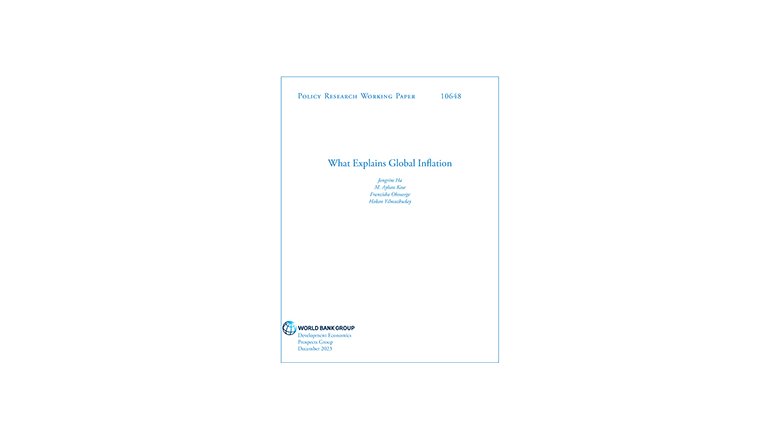Context. After staying mostly dormant for the prior decade, global inflation has been on a rollercoaster ride over the past three years. Global inflation declined sharply in the early stages of the pandemic amid a collapse in demand and oil prices. In mid-2020, however, it started to pick up as demand bounced back, supply disruptions deepened, and oil prices rebounded. In July 2022, global inflation reached its highest level since the mid-1990s. It then began to subside but it remains significantly above the pre-pandemic average. These developments have pushed the sources of global inflation movements to the center of policy debates.
New analysis. Against this background, this study presents the first systematic empirical analysis of the drivers of global inflation over the period of 1970-2022. It quantifies the roles played by a wide range of shocks, including shocks to global demand, global supply, oil prices, and global interest rates, in driving global inflation.
Drivers of global inflation. Oil price shocks were the main drivers of variation in global inflation with a contribution of over 38 percent, followed by global demand shocks with a contribution of about 28 percent over the past five decades, and much smaller contributions of global supply shocks and interest rate shocks. Impulse responses also suggest a more significant role for oil prices and global demand shocks. For instance, following a positive oil price shock of around 10 percent, global inflation increases by 0.35 percentage point within a year, and 0.55 percentage point within three years.
In addition, oil price and global demand shocks were the main drivers of movements in global inflation around every global recession since 1970 (1975, 1982, 1991, 2009, and 2020). For example, in the early months of the COVID19-induced global recession of 2020, demand shocks severely depressed global inflation. Oil price and global demand shocks led the surge in global inflation between mid-2020 and mid-2022, as well as the disinflation since mid-2022.
Evolution of the drivers of global inflation. Over time, the role of global demand shocks and oil price shocks has grown and that of global supply shocks has receded. During 2001-22, oil price and global demand shocks accounted for 65 percent of total inflation variation, up from 56 percent in the two earlier periods of 1970-85 and 1986-2000 the study examines. The contribution of global supply shocks, on the other hand, decreased to 13 percent in 2001-22, from 25 percent in the earlier periods. The importance of global interest rate shocks in driving global inflation was broadly stable at around 19-22 percent.
Drivers of different measures of global inflation. The importance of shocks varied depending on the underlying measure of global inflation. For example, oil price shocks accounted for only 7 percent of the variation in global core CPI inflation, which excludes volatile energy and food prices. Global supply shocks explained 41 percent of global core CPI inflation variation, and global demand and interest rate shocks split the rest of the core CPI inflation variation. For global producer price index (PPI) inflation variation, the importance of oil price and global interest rate shocks was similar in magnitude to that in global CPI inflation variation. However, global supply shocks explained a slightly larger share of PPI inflation variation than CPI inflation.
Robustness. These results are robust to a wide range of sensitivity exercises, including alternative definitions of global variables, different samples of countries, alternative sub-periods, and additional identification restrictions for shocks.
Citation
Ha, J., M. A. Kose, F. Ohnsorge, and H. Yilmazkuday. "What Explains Global Inflation." IMF Economic Review (2024). https://doi.org/10.1057/s41308-024-00255-w
Disclaimer
The findings, interpretations, and conclusions expressed in this paper are those of the authors and should not be attributed to the World Bank, its Executive Directors, or the countries they represent.



